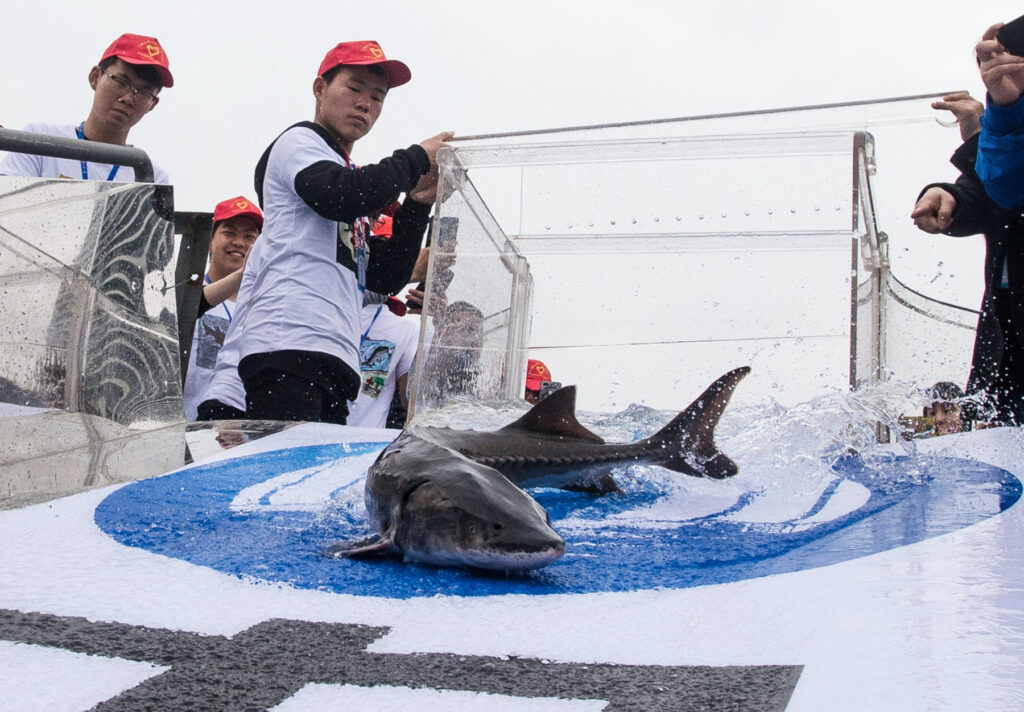
After cascade of dams dissected Yangtze River and locals started using modern fishing gear the fate of aquatic biodiversity was decided: 60% of fish species in the river are threatened.
The International Union for Conservation of Nature and Natural Resources (IUCN) announced the extinction of the Chinese paddlefish and the wild Yangtze sturgeon on June 21 in its updated Red List of threatened species.
The global sturgeon reassessment published by the IUCN on Thursday revealed that 100 percent of the world’s remaining 26 sturgeon species are now at risk of extinction, up from 85 percent in 2009.
The reassessment has also confirmed the extinction of the Chinese paddlefish (Psephurus gladius) and that the Yangtze Sturgeon (Acipenser dabryanus) has moved, from critically endangered, to extinct in the wild.
According to the reassessment, sturgeons have been overfished for their meat and caviar for centuries. Therefore, stronger enforcement of regulations against the illegal sale of sturgeon meat and caviar is critical to stop further declines. Besides, dams affect all sturgeon species migrating to their breeding grounds, while rivers warming due to climate change further disrupts sturgeon reproduction.
Both Chinese paddlefish and Yangtze Sturgeon are representative aquatic species of the Yangtze River Basin.
The Chinese paddlefish was listed as a first-class state protected animal in China in 1989 and was last seen alive in 2003.
Along with the loss of the Chinese paddlefish, another sturgeon species, the Yangtze sturgeon is now classified as “extinct in the wild.” Existing individuals in the river are the result of the release of captive stocks.
Historically, this species experienced unsustainable levels of fishing. Furthermore, mesh sizes of fishing nets have been reduced, thereby capturing young sturgeon, especially during the periods when many juveniles concentrate to feed. The primary traditional fishing season in the main stream of the Yangzte River was between March and August, with more than 30% of the catch processed between April and May. This is also the spawning season for Acipenser dabryanus, therefore spawning stocks were particularly vulnerable to capture.
The construction of the Gezhouba Dam in 1981 and the Three Gorges Dam in 2003 have also caused major adverse effects to the habitat of this species and, prior to the wild population disappearing, these constructions caused the population to be restricted to the upstream river, above the dams. The construction of the Xiangjiaba Dam in 2008 is situated in the middle of this sturgeon’s spawning reach and is therefore expected to adversely affect it through habitat fragmentation and associated habitat degradation. More recently, two more dams (Baihetan and Xilodu) were constructed upriver, changing the temperature and hydrology of the river.
Fishing was banned completely by 2021 in the main stem of the Yangtze River. In 2000, the first national nature reserve was created in the upper Yangzte River. The area of this reserve was extended in 2005 to mitigate the conflict between hydroelectric projects and maintenance of ecosystem functionality. The reserve is now the largest aquatic reserve in China, which has a total length of 1,162.6 km, including 436.5 km of the main river
From 2007 to 2018, approximately 200,000 juveniles of Yangtze Sturgeon were released into the upper Yangtze River for stock rehabilitation. In 2018, around 40 mature individuals were released into the same waters. To date, there has been no evidence that the species currently is reproducing in the wild, but Chinese scientists hope that the fishing ban, ongoing stocking and the national action plan are likely to rebuild a self-sustaining population within the next few decades.
Sources Global Times and IUCN


